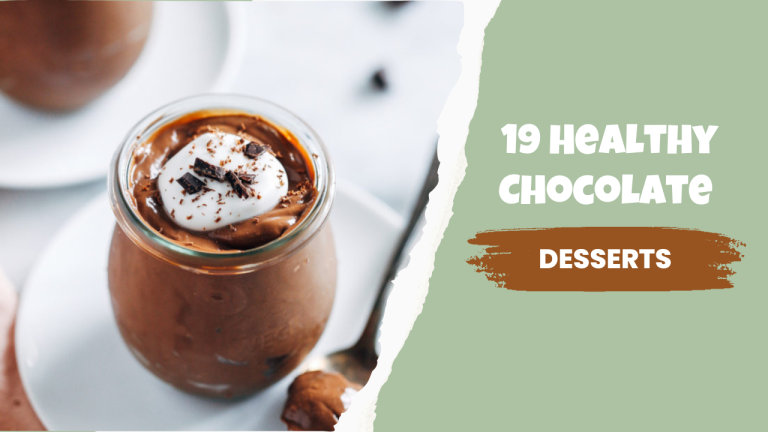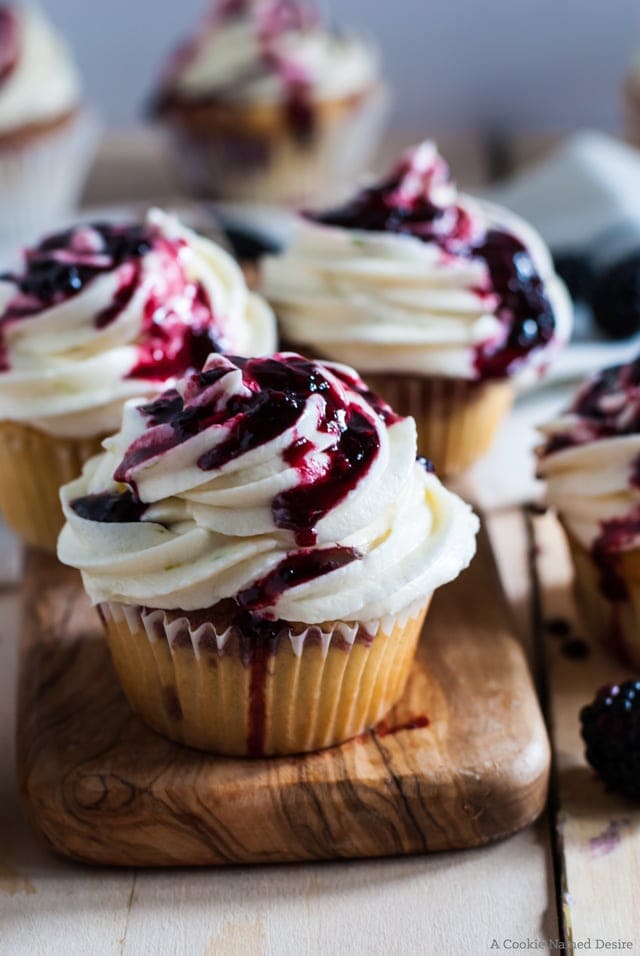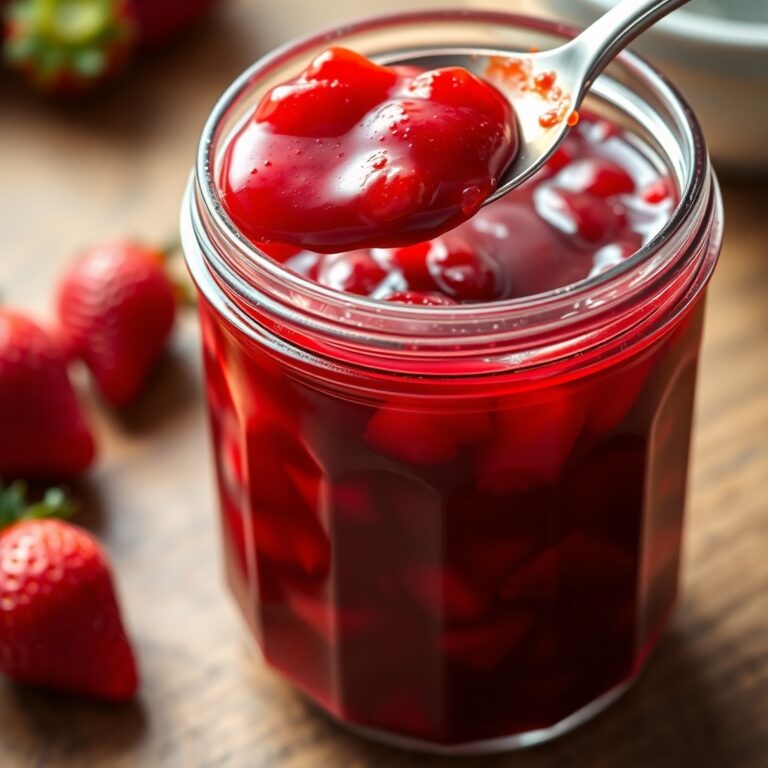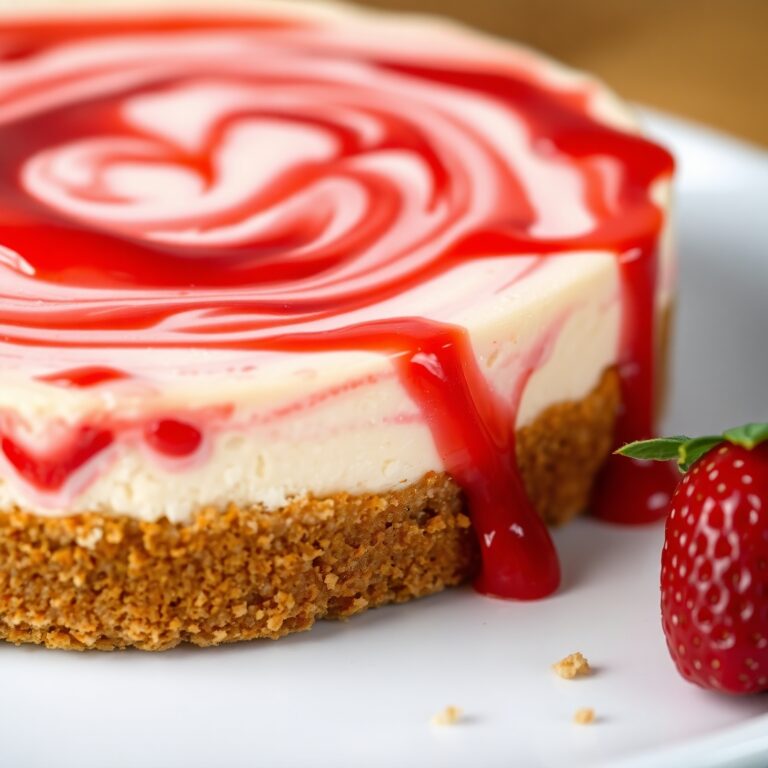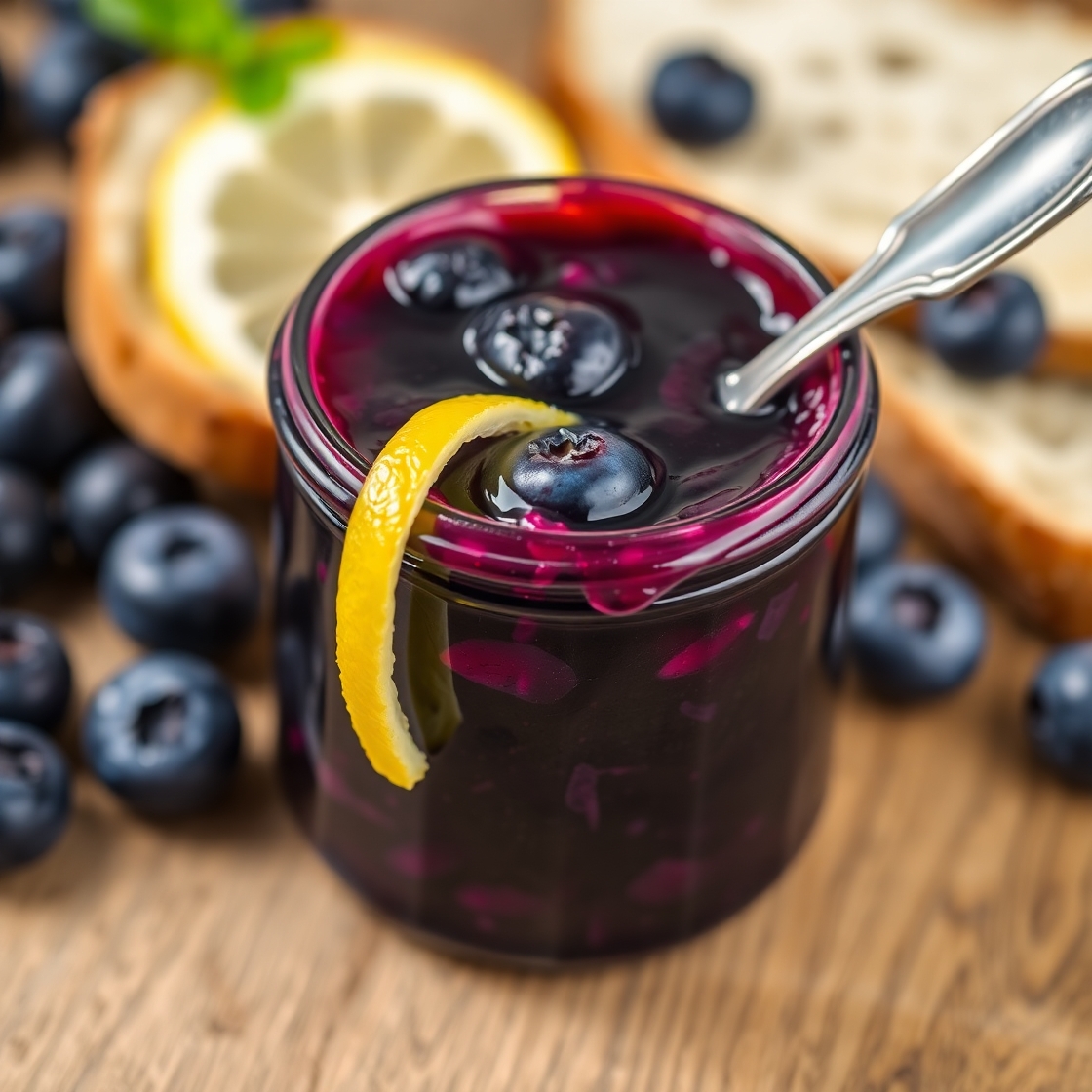
There’s something comforting about a jar of homemade blueberry jam.
Maybe it’s the way the thick, purple spread glistens in the sunlight, or how the smell of bubbling berries fills the kitchen with a sweet, tangy aroma that lingers in your memory. For me, it started during a summer road trip through Maine—where roadside stands overflowed with wild blueberries. I brought home baskets of them and didn’t want to waste a single berry. That’s when this jam recipe came to life.
This isn’t just a recipe—it’s a way to bottle up summer and enjoy it year-round. Whether you’re spreading it over warm toast, spooning it onto yogurt, or swirling it into oatmeal, blueberry jam is a pantry essential that feels both rustic and refined.
And once you realize how simple it is to make, you’ll never reach for store-bought again.
Why I Love This Recipe
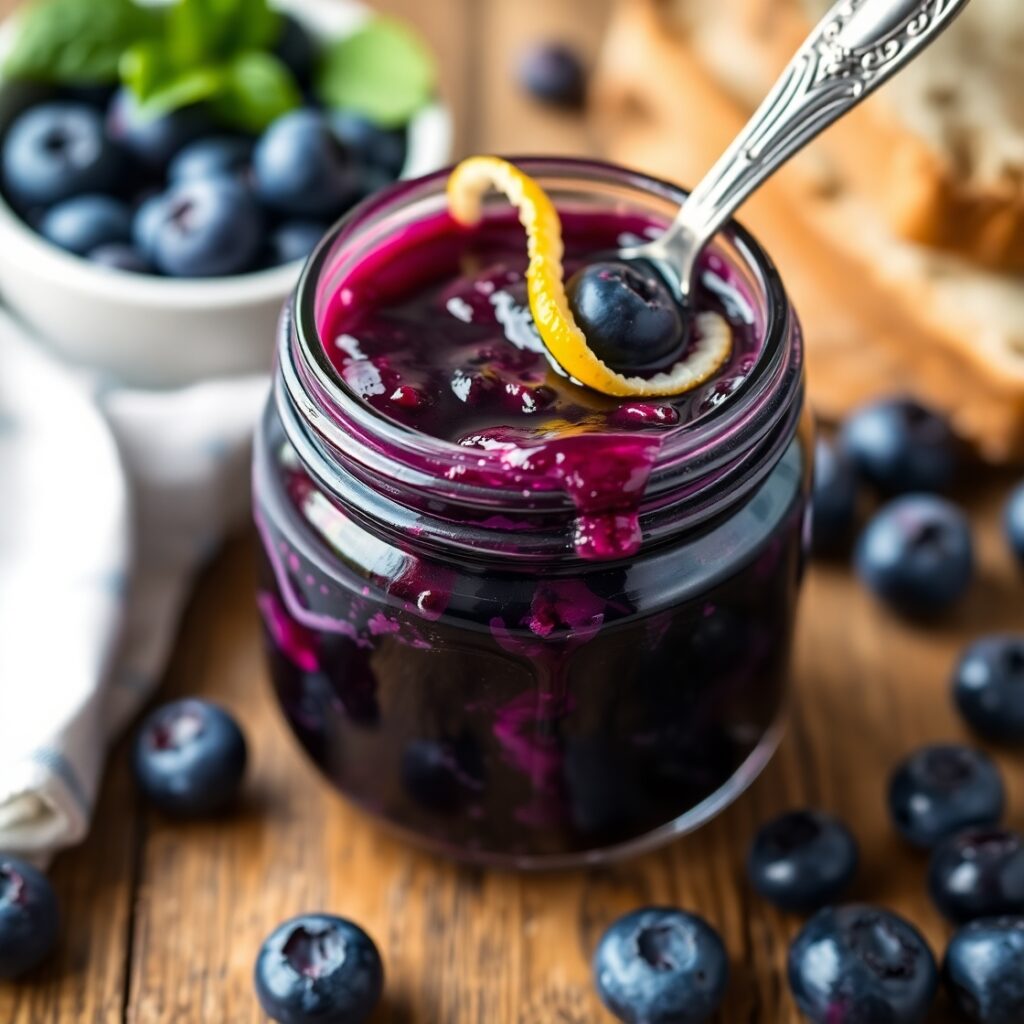
Homemade blueberry jam is one of those recipes that seems fancy—until you make it yourself and realize how incredibly easy and rewarding it is.
You get full control over what goes into your jar: no artificial preservatives, no excessive sugar, just pure, fresh blueberries and a few pantry staples. The natural sweetness of the berries shines through, and with a hint of lemon and the perfect consistency, the result is a deeply flavorful, rich jam that isn’t cloyingly sweet.
What really sets this recipe apart is its versatility.
You can use it in both sweet and savory dishes. It’s perfect as a topping for pancakes, scones, and ice cream, but also works beautifully in vinaigrettes or as a glaze for roasted meats. Unlike some jams, which can turn too thick or gelatinous, this one remains luxuriously spoonable and soft-set.
And perhaps most importantly, it’s a beginner-friendly preserve.
You don’t need special equipment, and it’s ready in under an hour. With just a few simple steps, anyone—yes, even you—can transform humble blueberries into a kitchen staple that lasts for months.
Ingredients for Blueberry Jam
This recipe requires just a few key ingredients, but each one plays an important role.
Let’s break them down:
Fresh Blueberries
The heart and soul of the jam. Choose ripe, plump blueberries—organic if possible—for the best flavor. Frozen berries can also be used if fresh are not in season, but make sure they’re unsweetened and fully thawed.
Granulated Sugar
Sugar not only sweetens the jam but also helps it set properly. Too little sugar and the jam won’t gel; too much and it can become overly stiff. This recipe uses the perfect ratio to keep the jam spreadable and balanced in flavor.
Lemon Juice
A splash of fresh lemon juice adds brightness and acidity, which balances the sweetness and enhances the berry flavor. It also naturally contains pectin, helping the jam to thicken.
Lemon Zest (Optional)
For a deeper citrus aroma, a bit of zest adds a fresh, floral note without overpowering the berries.
Pectin (Optional)
This recipe doesn’t require store-bought pectin if you’re patient and allow the jam to reduce naturally. But if you want a firmer set or faster cooking time, a small amount of low-sugar pectin can be added.
Butter (Optional, but helpful)
A pat of butter added during cooking reduces foam and results in a clearer, smoother jam.
Everything about these ingredients is straightforward, and once combined, they create something extraordinary.
How Much Time Will You Need?
Making blueberry jam from scratch is faster than you think.
Here’s the time breakdown:
Preparation Time: 10 minutes
Cooking Time: 30 to 40 minutes (depending on the water content of your berries)
Cooling Time: 15 minutes before transferring to jars
Total Time: Approximately 1 hour
If you’re canning the jam for long-term storage, add about 20 extra minutes for sterilizing and processing jars.
How to Make This Blueberry Jam
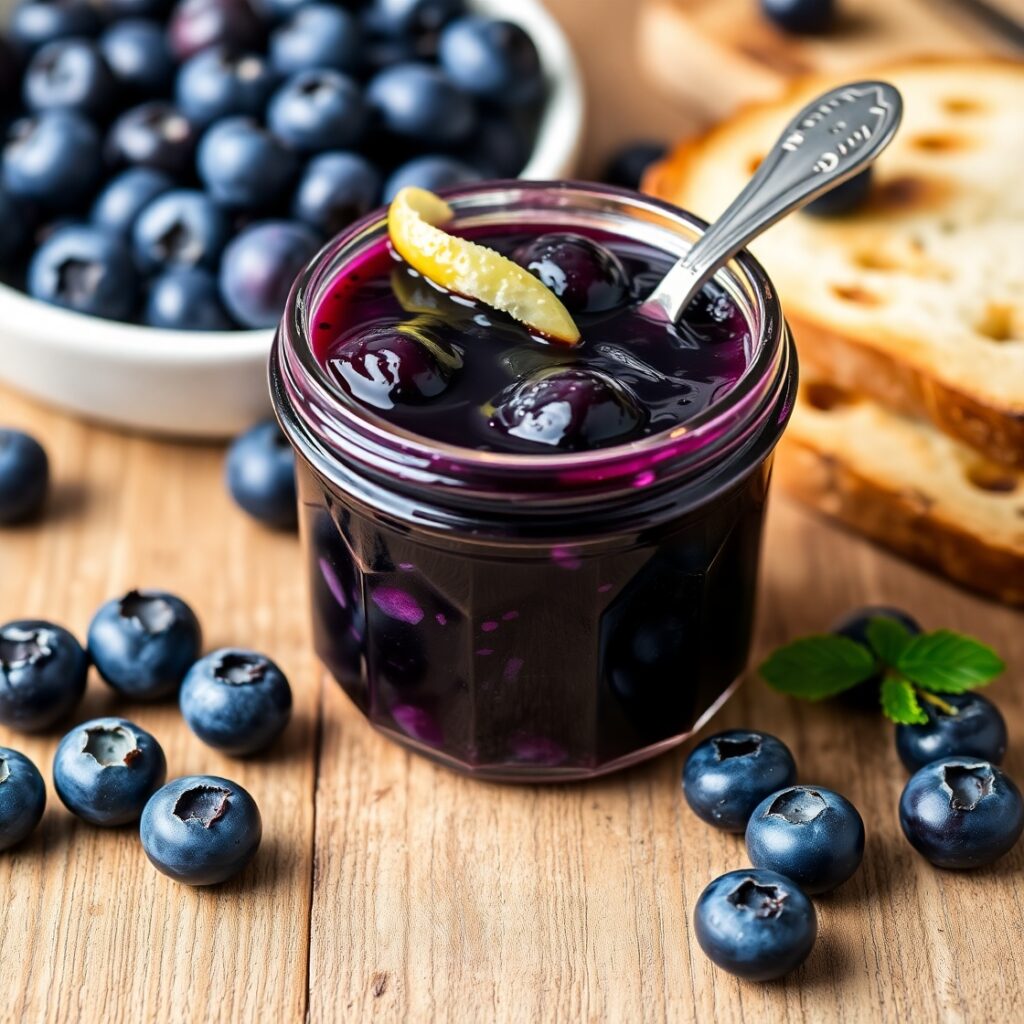
Here’s a detailed step-by-step guide to help you create blueberry jam that’s rich in flavor and perfect in texture.
Step – 1: Prepare the Berries
Wash the blueberries thoroughly under cold water. If using fresh berries, remove any stems or debris. If using frozen berries, allow them to thaw fully and drain off any excess water. Place the berries in a large, heavy-bottomed saucepan.
Step – 2: Add Sugar and Lemon
To the pot of blueberries, add sugar and freshly squeezed lemon juice. If using lemon zest, add that as well. Stir to combine everything evenly. Let this mixture sit for 10 minutes—this helps draw out the juice and starts dissolving the sugar.
Step – 3: Mash the Berries
Use a potato masher or the back of a wooden spoon to gently mash about half the berries. This gives you a mix of textures—some whole berries and some that have broken down.
Step – 4: Start Cooking
Place the saucepan over medium heat. Stir frequently as the mixture comes to a simmer. If using butter, add it now to reduce foam. Once it begins to boil, reduce the heat slightly and continue stirring regularly to prevent sticking or scorching.
Step – 5: Monitor the Temperature
Let the mixture simmer steadily for 30–40 minutes, or until it reaches about 220°F (105°C) on a candy thermometer. This is the setting point for jam. If you don’t have a thermometer, use the cold plate test: spoon a bit of jam onto a chilled plate, wait 30 seconds, then push it with your finger. If it wrinkles, it’s ready.
Step – 6: Skim and Cool
Once the jam reaches the desired consistency, remove from heat and skim off any foam from the surface. Let it rest for 10–15 minutes so it slightly thickens and settles before pouring.
Step – 7: Transfer to Jars
Carefully ladle the warm jam into sterilized jars, leaving ¼ inch of headspace. Seal with lids and let them cool to room temperature. Refrigerate and use within 3 weeks, or process in a water bath canner for shelf-stable storage.
Substitutions
This recipe is flexible and can be adjusted to fit your pantry or dietary needs.
Sweetener Alternatives:
If you prefer a lower-glycemic option, substitute granulated sugar with honey or maple syrup. Keep in mind, this will slightly alter the consistency and flavor, and the jam may be thinner unless cooked longer.
No Lemon Juice?
Use bottled lemon juice in a pinch, or swap with lime juice for a different citrus twist. Vinegar is not recommended as it lacks the pectin content and flavor balance.
Mixed Berries:
You can replace up to half of the blueberries with raspberries or blackberries for a mixed berry jam. Just be mindful that different berries have different water contents and may need more cooking time.
Pectin-Free Version:
This recipe naturally thickens without pectin, but if you want a firmer jam quickly, a small amount (1 tablespoon) of powdered pectin can be added at the beginning of the cooking process.
Best Side Dish of Blueberry Jam
Blueberry jam is wonderfully versatile and pairs beautifully with many other dishes. Here are three delightful ideas to serve it with:
1. Buttermilk Biscuits
Split open a warm, flaky biscuit and spoon in a generous layer of jam. The richness of the biscuit pairs perfectly with the jam’s fruity brightness.
2. Greek Yogurt Parfaits
Layer thick Greek yogurt, granola, and a few spoonfuls of blueberry jam for a quick, nourishing breakfast or dessert.
3. Brie and Crostini
Spread the jam on toasted crostini and top with a slice of brie. It’s the perfect balance of creamy, crunchy, and sweet-savory in each bite.
Serving and Presentation Tips
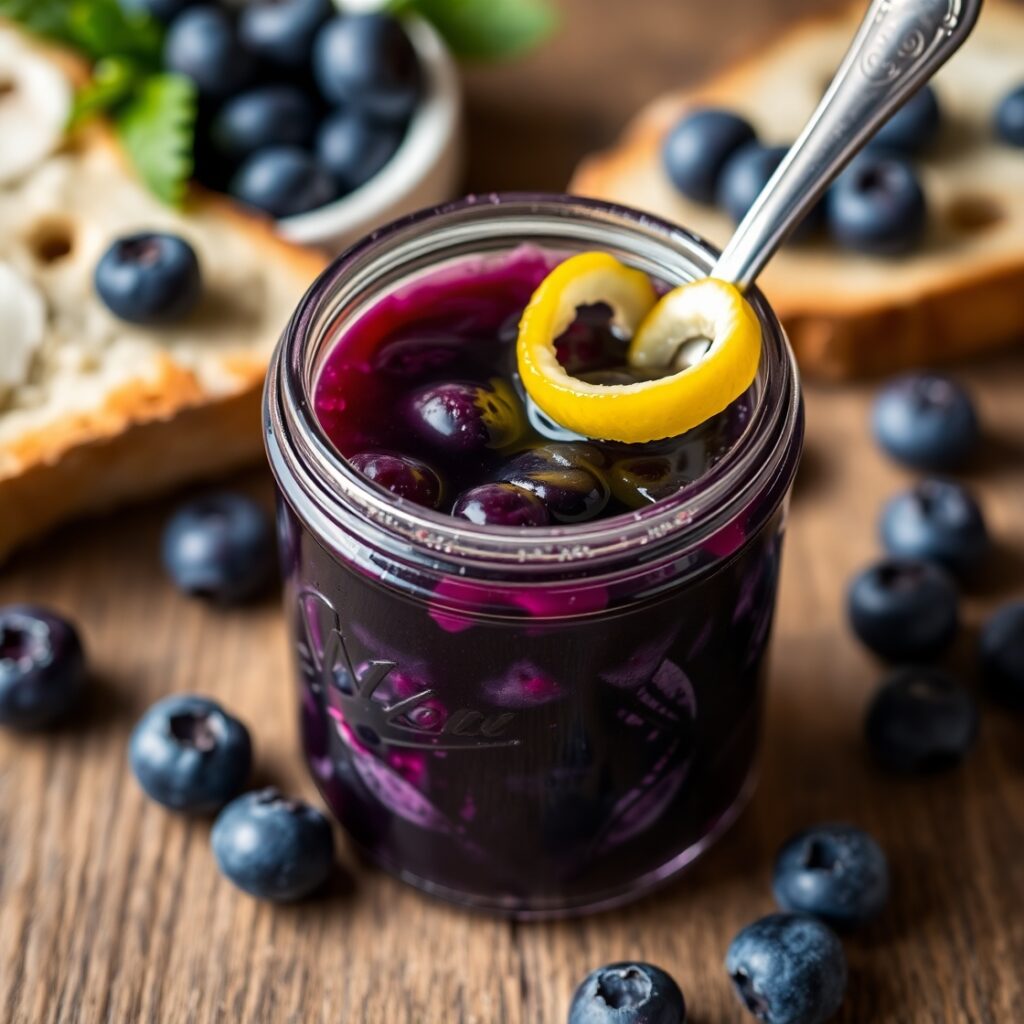
Blueberry jam is one of those rare creations that can elevate any table when served thoughtfully.
If you’re hosting a brunch, consider placing your jam in a small glass jar or ceramic ramekin, rather than leaving it in a cooking pot or plastic container. Garnish the top with a few fresh blueberries or a delicate lemon twist to hint at the flavors inside.
For toast or biscuits, use a butter knife or small spoon to create soft swirls across the bread—this keeps the spread looking rustic and inviting.
When serving it on a cheese board, use a mini glass bowl with a small silver spoon and place it near creamy cheeses like brie, goat cheese, or camembert. A sprig of thyme or rosemary on the side adds a touch of elegance.
Swirling the jam through yogurt or oatmeal? Do it just before serving so the color contrast stays vivid and fresh.
Simple steps like these make your homemade jam feel special and cherished.
Tips and Tricks to Make This Recipe Better
Homemade jam should taste like the fruit itself—bright, tangy, and pure—not overly sugary or runny.
Here’s how to make sure yours turns out exceptional every time:
Use the ripest berries possible.
Peak-season blueberries are naturally sweet and require less sugar. Avoid underripe berries as they can taste flat or overly tart.
Mash half the berries, leave the rest whole.
This mix gives the final product a satisfying texture with bursts of fruit.
Cook it low and slow.
Trying to rush the cooking process can lead to burning or uneven gelling. Take your time and let the jam reduce gently to build deep flavor.
Don’t skip the resting time.
Letting the jam cool slightly before jarring helps it firm up and prevents fruit from floating to the top.
Add butter to reduce foam.
Just a teaspoon of butter keeps the top from becoming frothy, resulting in a cleaner, smoother jar.
Use wide-mouth jars.
They make for easier filling, scooping, and cleaning.
Common Mistakes to Avoid
Making jam isn’t complicated, but a few simple mistakes can ruin the batch. Here’s what to watch for:
1. Using too much sugar or too little.
Stick to the tested sugar-to-fruit ratio. Too much sugar leads to a tough, jelly-like texture, while too little can make the jam runny and less shelf-stable.
2. Overcooking the jam.
If it gets too thick in the pot, it will be stiff once cooled. Remove from heat once it reaches 220°F or passes the cold plate test.
3. Skipping sterilization.
If you plan to store your jam outside the fridge, always sterilize your jars and lids. Unsterilized jars can introduce bacteria and shorten shelf life.
4. Ignoring foam.
While harmless, foam can create a cloudy look. Skim it off if you want a visually clean finish.
5. Not testing for set.
Guessing when it’s done can lead to jam that’s either runny or rubbery. Use a thermometer or cold plate to check readiness.
How to Store It
Storage is simple and flexible depending on how long you plan to keep your jam.
Short-Term Storage (Refrigerator):
If you’re not canning, store your jam in sterilized glass jars with airtight lids in the refrigerator. It will stay fresh for up to 3 weeks.
Freezer Storage:
Blueberry jam freezes well. Just be sure to leave about ½ inch of space at the top of the jar to allow for expansion. Use freezer-safe containers. It lasts up to 6 months in the freezer.
Canning for Long-Term Storage:
If properly canned using the water bath method, this jam can be stored in a cool, dark pantry for up to 1 year. Always label your jars with the date and check the seal before using.
Once opened, always refrigerate and use within 2–3 weeks.
FAQ
1. Can I use frozen blueberries to make this jam?
Yes! Thaw them fully and drain excess liquid before using. They work just as well as fresh berries.
2. Do I need pectin to make blueberry jam?
Not necessarily. Blueberries contain natural pectin, and lemon juice helps with the setting. If you prefer a firmer texture, you can add a small amount of powdered pectin.
3. Why is my jam too runny?
It may not have cooked long enough or didn’t reach the proper temperature (220°F). Let it cool fully before judging, as it thickens as it rests.
4. Can I reduce the sugar?
Yes, but reducing too much may affect the texture and shelf life. Use a low-sugar pectin if you want to cut back significantly.
5. What other flavors pair well with blueberry jam?
Try adding vanilla extract, cinnamon, or a splash of balsamic vinegar for depth. Herbs like thyme or basil can also provide a fresh twist.

Blueberry Jam Recipe
- Total Time: 45 minutes
- Yield: About 3 cups
- Diet: Vegetarian
Description
A deeply flavorful, soft-set blueberry jam made from just a handful of ingredients—ripe blueberries, sugar, and fresh lemon. This jam is perfect for morning toast, cheese boards, or swirled into yogurt. No pectin required, and ready in about an hour. Store it in jars and enjoy a taste of summer all year long.
Ingredients
- 4 cups fresh or frozen blueberries
- 1½ cups granulated sugar
- 2 tablespoons fresh lemon juice
- 1 teaspoon lemon zest (optional)
- 1 teaspoon unsalted butter (optional)
Instructions
- Rinse the blueberries and remove any stems or damaged fruit.
- Place berries, sugar, lemon juice, and zest in a large saucepan.
- Let sit for 10 minutes to allow juices to release.
- Mash half of the berries using a potato masher for a mix of textures.
- Bring mixture to a simmer over medium heat, stirring regularly.
- Add butter to reduce foam (optional).
- Cook for 30–40 minutes, stirring often, until it reaches 220°F or passes the wrinkle test.
- Remove from heat and skim off any foam.
- Let sit for 10–15 minutes before pouring into jars.
- Seal jars and refrigerate or process for long-term storage.
Notes
Use the cold plate test to check for doneness: place a small spoonful on a chilled plate and push with your finger—if it wrinkles, it’s ready.
For a firmer texture, consider adding 1 tablespoon of powdered pectin at the beginning.
This jam tastes even better after resting overnight as the flavors deepen.
- Prep Time: 10 minutes
- Cook Time: 35 minutes
- Category: Spreads & Preserves
- Method: Stovetop
- Cuisine: American
Nutrition
- Serving Size: 1 tbsp
- Calories: 45

